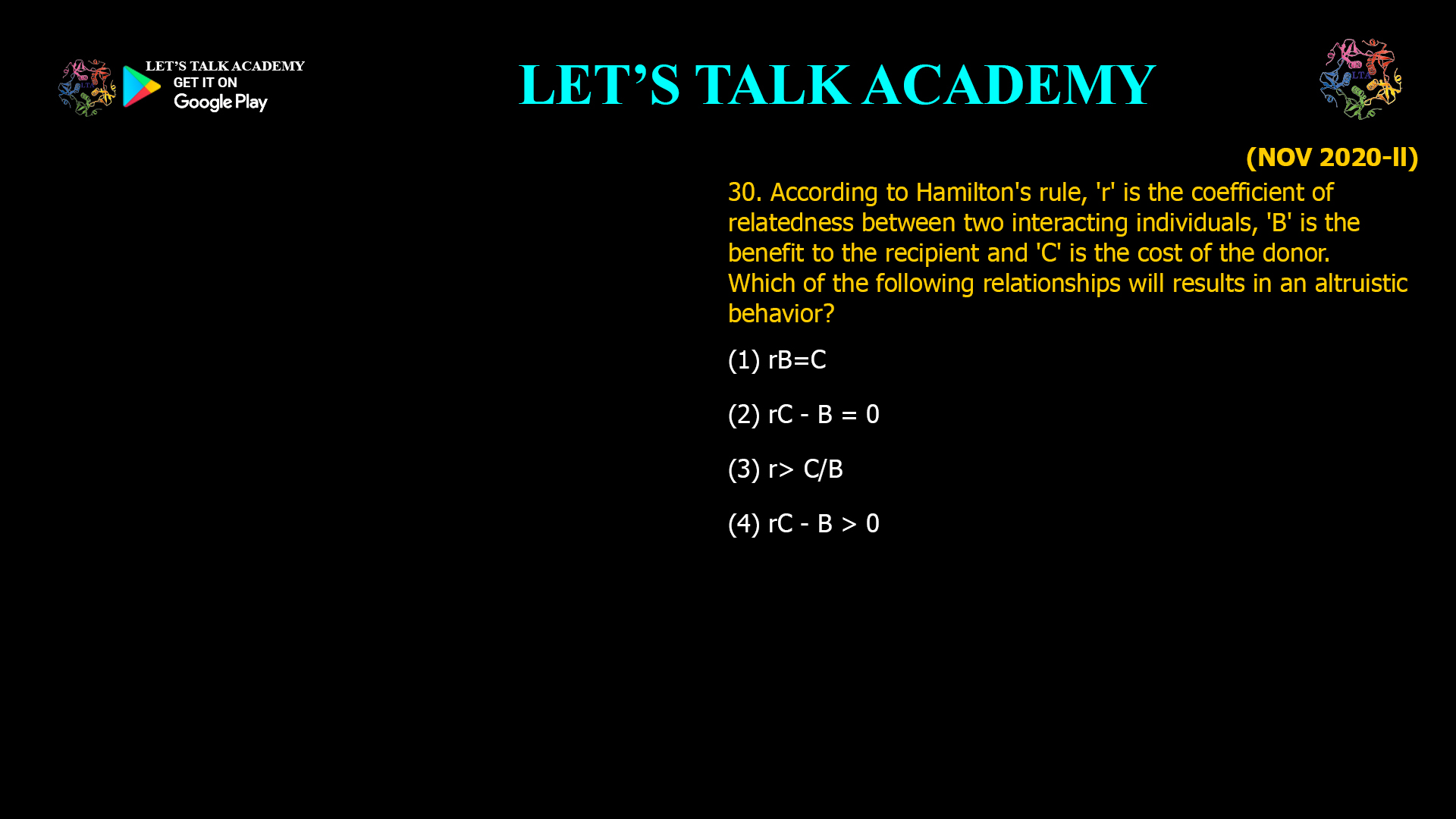- According to Hamilton’s rule, ‘r’ is the coefficient of relatedness between two interacting individuals, ‘B’ is the benefit to the recipient and ‘C’ is the cost of the donor. Which of the following relationships will results in an altruistic behavior?
(1) rB=C (2) rC – B = 0
(3) r> C/B (4) rC – B > 0The Components of Hamilton’s Rule
-
r: Coefficient of relatedness between the donor and recipient (probability that a gene present in one is also present in the other due to shared ancestry).
-
B: Benefit to the recipient (measured as an increase in reproductive success).
-
C: Cost to the donor (measured as a decrease in reproductive success).
The Mathematical Expression
Hamilton’s rule states that altruistic behavior will evolve if:
rB>C
or, rearranged,
r>CB
This means that altruism is favored by natural selection when the benefit to the recipient, weighted by relatedness, exceeds the cost to the donor.
Why This Relationship Matters
-
Predicts Altruism: It allows biologists to predict when helping behavior will spread in a population.
-
Explains Kin Selection: It underpins the theory of kin selection, showing why animals often help relatives.
-
Universal Application: The rule applies across species and social systems, from insects to mammals.
Analyzing the Options
Let’s evaluate the options in light of Hamilton’s rule:
-
rB = C: This is the threshold; altruism is favored only when rB exceeds C, not when it is equal.
-
rC – B = 0: This does not match the structure of Hamilton’s rule.
-
r > C/B: This is the correct rearrangement of Hamilton’s rule and indicates the condition under which altruism evolves.
-
rC – B > 0: This is not the correct form of the rule.
Conclusion
According to Hamilton’s rule, altruistic behavior will evolve when the coefficient of relatedness (r) is greater than the ratio of the cost to the donor (C) to the benefit to the recipient (B). This is mathematically expressed as:
(3) r > C/B
-




1 Comment
Kajal
October 15, 2025Option 3 is correct